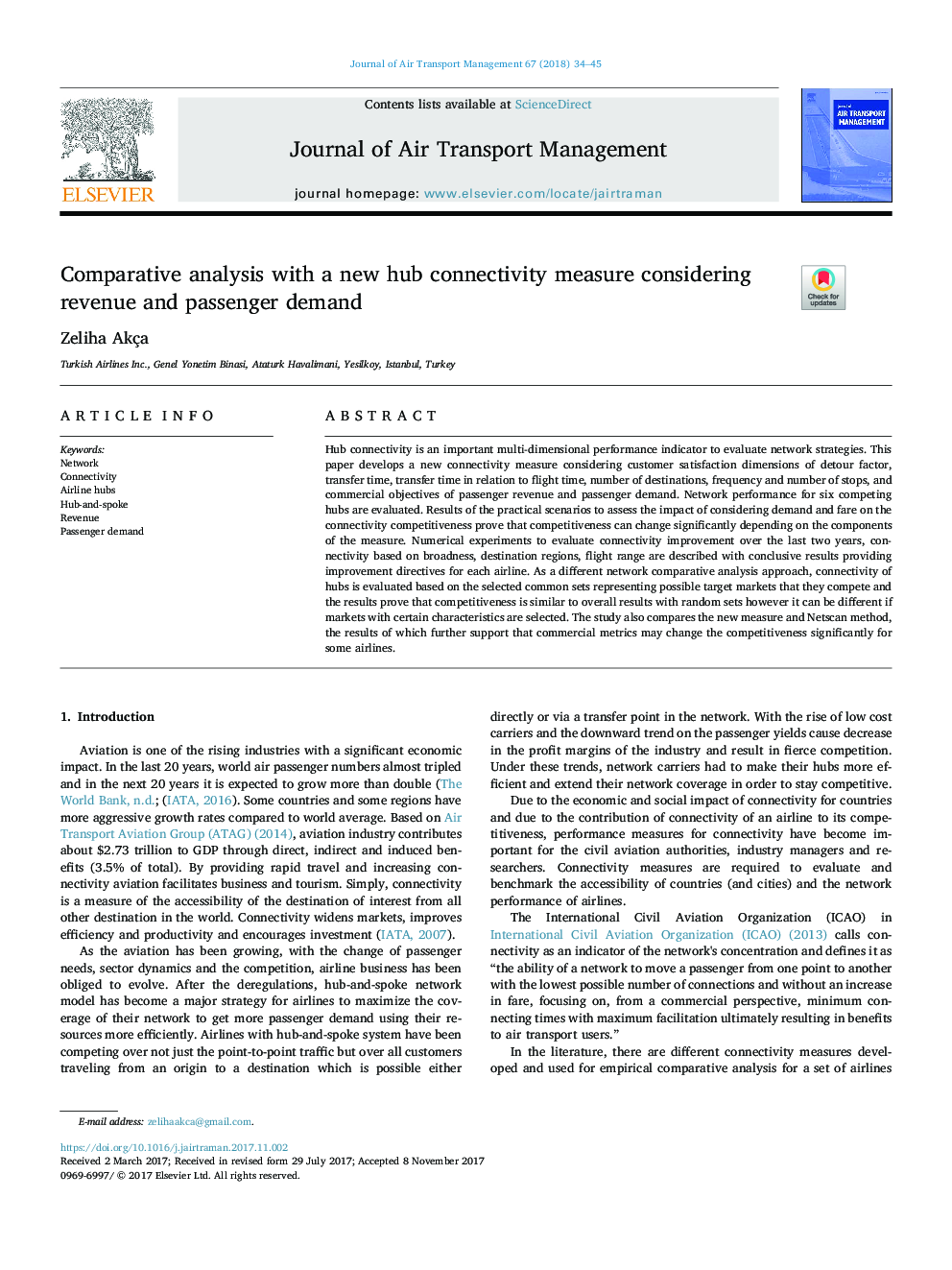| Article ID | Journal | Published Year | Pages | File Type |
|---|---|---|---|---|
| 7435246 | Journal of Air Transport Management | 2018 | 12 Pages |
Abstract
Hub connectivity is an important multi-dimensional performance indicator to evaluate network strategies. This paper develops a new connectivity measure considering customer satisfaction dimensions of detour factor, transfer time, transfer time in relation to flight time, number of destinations, frequency and number of stops, and commercial objectives of passenger revenue and passenger demand. Network performance for six competing hubs are evaluated. Results of the practical scenarios to assess the impact of considering demand and fare on the connectivity competitiveness prove that competitiveness can change significantly depending on the components of the measure. Numerical experiments to evaluate connectivity improvement over the last two years, connectivity based on broadness, destination regions, flight range are described with conclusive results providing improvement directives for each airline. As a different network comparative analysis approach, connectivity of hubs is evaluated based on the selected common sets representing possible target markets that they compete and the results prove that competitiveness is similar to overall results with random sets however it can be different if markets with certain characteristics are selected. The study also compares the new measure and Netscan method, the results of which further support that commercial metrics may change the competitiveness significantly for some airlines.
Related Topics
Social Sciences and Humanities
Business, Management and Accounting
Strategy and Management
Authors
Zeliha Akça,
